
La diorite de Langourla

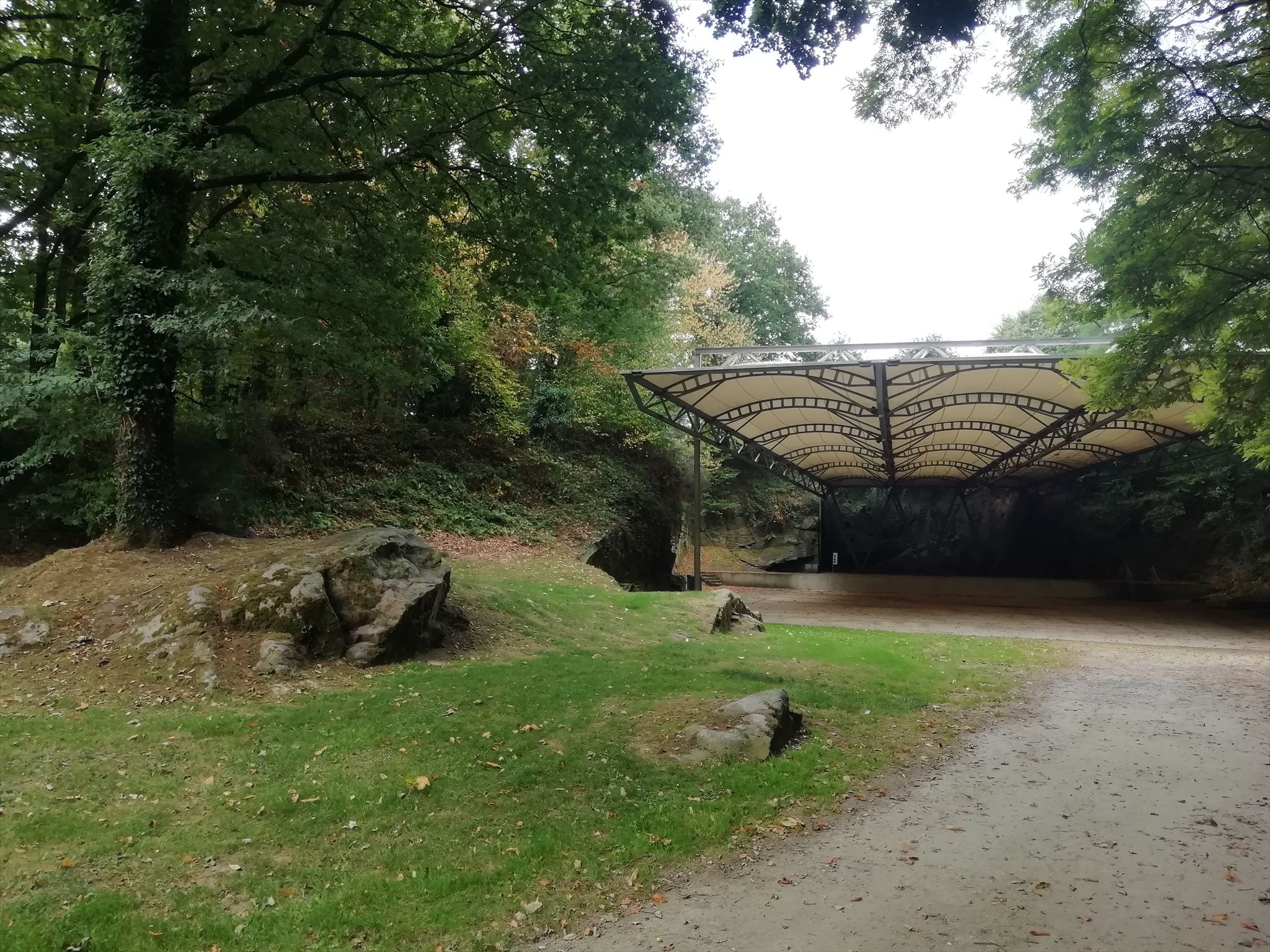
Vous êtes ici au théâtre de verdure de Langourla. C'était une carrière gérée par la famille Colombel mais l'activité a cessé autour de 1960. La carrière a été laissée à l'abandon jusqu'en 1996 où elle a été réhabilitée en théâtre de verdure et un toit a été posé en 2000. Ce site remarquable peut accueillir entre 900 et 1200 personnes lors de festivals (Jazz à Langourla), concerts, bals ou bien mariages.
La roche qui a été exploitée ici est la diorite. C'est une roche magmatique composée de plagioclase, d'amphibole et de mica. La diorite est différente du gabbro par l'absence d'olivine et elle est différente du granite par l'absence (ou en quantité moindre) de quartz.
Les roches magmatiques
Le magma est une roche fondue qui se forme dans les profondeurs de la terre où il est soumis à une haute température et à une forte pression. Le magma est moins dense que les roches solides de la lithosphère (l'enveloppe rigide de la surface de la terre), il est donc poussé par le haut par la poussée d'Archimède. Le magma se refroidi et se solidifie pour former les roches magmatiques, aussi appelées roches ignées. En fonction du refroidissement du magma, on obtient différentes roches magmatiques.
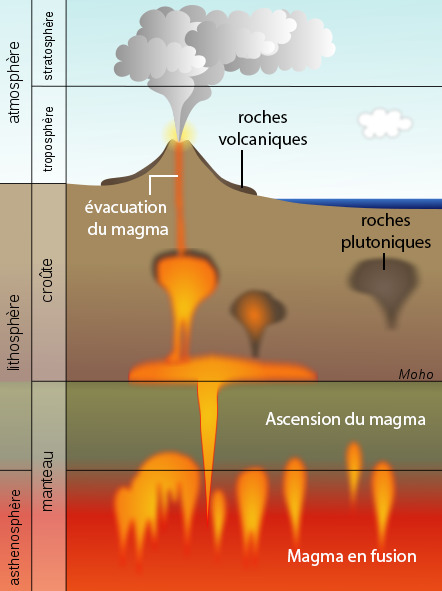
On distingue deux types de roches magmatiques :
-
Les roches plutoniques car le magma est refroidi lentement et en profondeur. La roche formée contient des cristaux visibles à l’œil nu. On parle également de roches intrusives.
-
Les roches volcaniques car le magma qui arrive à la surface de la terre se refroidit très rapidement au contact de l'air ou de l'eau. Les roches ne développent généralement pas de cristaux visibles à l’œil nu. On parle également de roches extrusives.
Questions
Rappel concernant les Earthcaches :
Il n'y a pas de conteneur à rechercher ni de logbook à signer. Après avoir été sur les lieux pour chercher les réponses aux questions, loguez cette cache "Found it" et envoyez-moi vos propositions de réponses, en précisant le code GC de la cache, soit via mon profil, soit via la messagerie geocaching.com (Message Center), et je vous contacterai en cas de problème.
Questions :
1- Quelle est la différence entre la diorite et le granite ?
2- Décrivez-moi la roche que vous observez, et dans quel type de roche magmatique classe-t-on la diorite de Langourla ?
3- Avec l'aide du tableau, qu'elle est la structure de la diorite ?
4- D'après vous, comment a été refroidi le magma pour obtenir la diorite ? Pourquoi ?
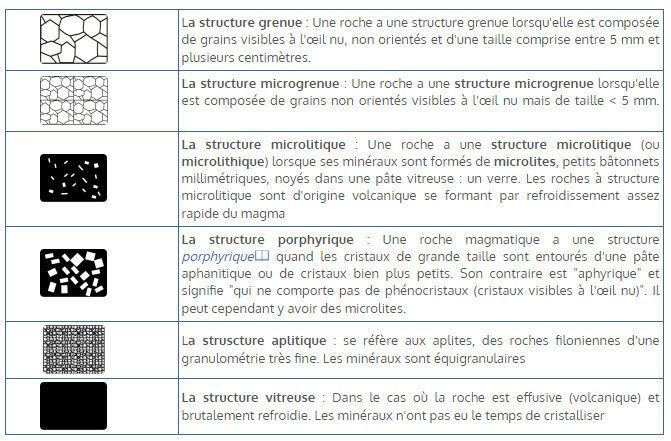

Diorite of Langourla


You are here at the sylvan theater of Langourla. It was a quarry managed by the Colombel's family but the activity ceased around 1960. The quarry was abandoned until 1996 when it was rehabilitated in sylvan theater and a roof was laid in 2000. This remarkable site can accommodate between 900 and 1200 people during festivals (Jazz in Langourla), concerts, balls or weddings.
The rock that has been exploited here is diorite. It is a magmatic rock composed of plagioclase, amphibole and mica. Diorite is different from gabbro in the absence of olivine, and is different from granite in the absence (or less quantity) of quartz.
Magmatic rocks
Magma is a melted rock that forms in the depths of the earth where it is subjected to high temperature and pressure. The magma is less dense than the solid rocks of the lithosphere (the rigid envelope of the surface of the earth), so it is pushed upwards by the buoyancy of Archimedes. The magma cools and solidifies to form magmatic rocks also called igneous rocks. Depending on the cooling of the magma, different magmatic rocks are obtained.
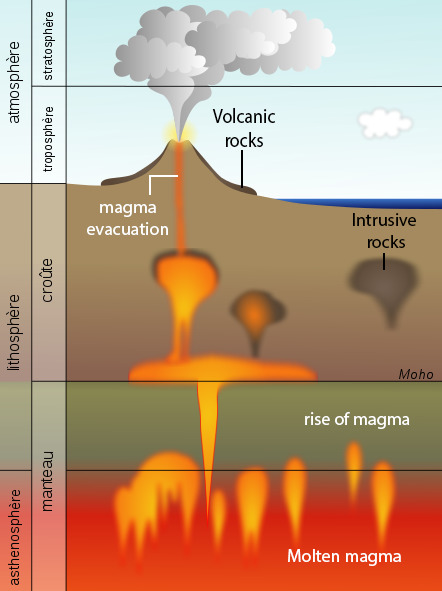
There are two types of magmatic rocks :
-
The plutonic rocks because the magma is cooled slowly and deeply. The rock formed contains crystals visible to the naked eye. There is also talk of intrusive rocks.
-
Volcanic rocks because the magma that reaches the surface of the earth cools very quickly in contact with air or water. Rocks do not usually develop crystals visible to the naked eye. There is also talk of extrusive rocks.
Questions
Reminder concerning the Earthcaches :
There is no container to look for or a logbook to sign. After having been on the spot to look for the answers to the questions, log this cache "Found it" and send me your answers, specifying the GC code of the cache, either via my profile or via messaging geocaching.com (Message Center), and I will contact you if there is a problem.
Questions :
1- What is the difference between diorite and granite?
2- Describe me the rock that you observe, and in what type of magmatic rock do you classify the Langourla diorite?
3- With the help of the table, what is the structure of diorite?
4- How do you think the magma was cooled to get diorite? Why ?
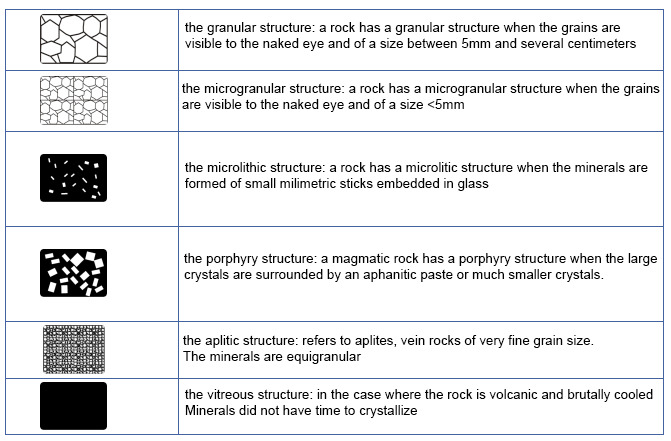
Sources :
https://fr.wikipedia.org/wiki/Roche_magmatique
https://fr.wikipedia.org/wiki/Magma_(géologie)